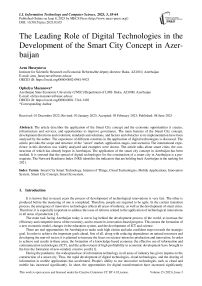The Leading Role of Digital Technologies in the Development of the Smart City Concept in Azerbaijan
Автор: Arzu Huseynova, Ophelya Mazanova
Журнал: International Journal of Information Technology and Computer Science @ijitcs
Статья в выпуске: 3 Vol. 15, 2023 года.
Бесплатный доступ
The article describes the application of the Smart City concept and the economic opportunities it creates, infrastructure and services, and opportunities to improve governance. The main features of the Smart City concept, development directions and evolution, standards and solutions, and factors and obstacles to its implementation have been analyzed by the author. The experience of different countries in the application of digital technologies is discussed. The article provides the scope and structure of the "smart" market, application stages, and scenarios The international experience in this direction was widely analyzed and examples were shown. The article talks about smart cities, the construction of which has already begun in Azerbaijan. The application of the smart city concept in Azerbaijan has been studied. It is stressed that the spread of digital technologies for the construction of a smart city in Azerbaijan is a prerequisite. The Network Readiness Index (NRI) identifies the indicators that are holding back Azerbaijan in the ranking for 2021.
Smart City Smart Technology, Internet of Things, Cloud Technologies, Mobile Applications, Innovation System, Smart City Concept, Smart Ecosystem
Короткий адрес: https://sciup.org/15018936
IDR: 15018936 | DOI: 10.5815/ijitcs.2023.03.05
Текст научной статьи The Leading Role of Digital Technologies in the Development of the Smart City Concept in Azerbaijan
It is known that in recent years the process of development of technological innovations is very fast. The other is produced before the mastering of one is completed. Therefore, people are required to be agile. In the current transition process, the emergence of innovative technologies affects all areas of industry, as well as the development of smart cities. Therefore, it is especially important to address the issue of reforms related to the application of technological innovations in all areas of production [1].
The main task facing Azerbaijan today is not to lag behind the development process of the world, to increase the efficiency and competitiveness of the economy, and to ensure its innovation-based progress. This means the formation of a new economic model, changes in the education system, and the development of ICT and science.
There are real opportunities for Azerbaijan to make such high claims and take confident steps towards the strategic goal. In order to achieve the important goals ahead, first of all, along with reducing dependence on natural resources and developing the non-oil sector, it is planned to increase the focus on science-intensive production and innovation. In order to achieve real results in these areas, the formation of a knowledge-based economy, the effective use of information and communication technologies (ICT), and the achievement of high profitability in economic development have brought to the fore the formation of new-minded, creative youth [1].
During the pandemic, the widespread use of information technology in all areas of industry has given impetus to the construction of a smart city. Thus, the rapid development of digital technologies, cloud technologies, and the sharing of information in mobile applications has accelerated. People's ability to use innovative technologies such as cloud and mobile has increased significantly. In short, the opportunities for digital transformation have increased significantly further COVID-19. Thus, the pandemic became the driving force of digital change and gave impetus to the development of technological innovation.
Taking this into account, we can say that the use of innovative ICT-based technologies, ie digital technologies, has proved to be a key condition for the construction of smart cities. In addition, the Internet of Things (IoT), Web 3.0, cloud, and mobile technologies are important in providing effective public services.
One of the main technical parameters of the smart city is the combined use of the Internet of Things and ICT, which uses sensory networks and sensors that allow real-time monitoring.
Based on research, it can be said that the cloud platform services provided by Microsoft and Google are growing rapidly. For half a century, innovations, and new approaches in the field of information exchange have been constantly developing.
Looking at the history, we can say that ARPANET, has been the predecessor of the current Internet network since 1969, E-mail since 1971, the Internet and the TCP Internet Protocol since 1980, and cloud technology since the beginning of the XXI century. it is applied [1].
It is known that the idea of creating a smart city was developed in 2008 as part of IBM's proposal to create a "smart planet". ICT companies supported this proposal. Because this proposal will accelerate the development of new technologies. Indeed, over time, we have witnessed this [1].
ICT companies have turned their projects in this direction and have made more revenue than ever before and continue to do so. Examples are South Korea and China, which are more successful in the rapid development of new technologies.
The first smart city is considered to be Songdo in South Korea. Currently, examples of smart cities such as Madrid, Stockholm, Amsterdam, Barcelona, Dublin, Chicago, Moscow, Samara, Omsk, Kazan, and Voronezh can be given [2].
Research shows that technologically promising areas are mainly in three directions: mobile, cloud, and biometric. Thanks to the continuous development of mobile and cloud technologies, as well as their interaction, creates a new business model. It also provides opportunities for the use and supply of products in the cloud sphere in a virtual environment.
The integrated use of these technologies and data analysis allows for smarter and more efficient decisions in urban and rural environments. Currently, many developed European countries prefer the smart city project [3].
Let's look at the main elements of Smart City:
Smail
The smart economy is measured by entrepreneurship and a city's -productivity, adaptation to changes, the .flexibility of the labour market and international
Smart mobility
-
• Smart mobility is perceived by the accessibility' of information and к communication (infrastructure, v through the F development of sustainable, innovative and safe transport.
Smart
cooper.
The smart environment is measured by the attractiveness of the natural ^environment, pollution levels, environmental protection activities and resource management methods.
Smart people
Smart people^rt? characterised by thejefel of Qualifications, lifelong learning, social and ethnic diversity, creativity', openness and participation in public life.
Smart
Smart livining
Smart living is measured by existing cultural facilities, living (conditions (health, safety. housing), educational facilities, tourist attractiveness and
-
• Smart governance is expressed by the transparency of city management, social participation, the klevel of public «emces and the ■mplementation of ^development
2016; Zanella et al.. 2014; Caragliu et al., 2011).
social cohesion.
Fig.1. Basic Elements of Building a Smart City
These solutions are, indeed, based on multiple architectures, standards and platforms. And led to a highly fragmented IoT landscape. This make challenging the realization of the Smart City concept [3].
Improving e-governance in a smart city is primarily related to Internet technologies, and a smart, integrated innovation environment [4].
All this requires a comprehensive approach to creating a smart city. Innovative technologies, artificial intelligence and machine learning, big data processing, and the Internet of Things (IoT) are widely used in developed countries.
The Economist ranks 76 safe cities each year (60 cities in the 2021 report). The rating includes digital, medical, infrastructure, environmental and personal security, etc., applied modern technologies. fields are taken [5].
At present, the change in the development priorities of society on the basis of technological development leads to a change in the basis of economic development [5]. Cities that increase social, economic, and environmental sustainability face many challenges:
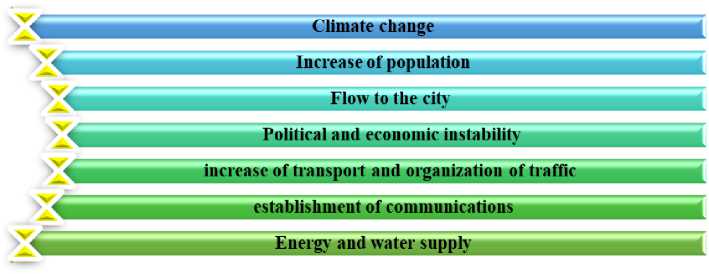
Fig.2. Problems in the Development of Smart Cities
These problems pose completely new challenges for urban households:

Fig.3. The Main Issues Facing Smart Cities
This, in turn, accelerates the study of global trends in urban planning and improving the living standards of the urban population and the use of accumulated experience, optimization of infrastructure, and the application of technological and organizational innovations [5].
Thus, according to the world trend, the innovative way of territorial unit development is the concept of "Smart" (smart city/village/network / etc.).
We would like to emphasize that our article aims to develop a comprehensive methodological approach for evaluating the role of integration technologies in research. To achieve this goal, our study put forward a hypothesis:
Hypothesis 1. The economic efficiency of digital technologies significantly affects the construction of a smart city.
Hypothesis 2. The construction of a smart city in Azerbaijan is highly dependent on the sub-indices of the availability of modern network technologies.
2. Methodology
Currently, based on the first results of the European project, the European Smart Cities Platform (EPIC) organizes the discussion on the Smart City context in the following structure [3]:
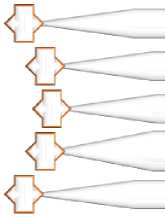
platform paradigm
business need and technical solution lessons learned and key challenges ultimate benefits of the proposed solution for cities, citizens and businesses innovative public services and work ‘Smarter'
Fig.4. Structure of the Discussion of the Smart City Context
The EPIC project is designed to explore the needs, requirements and added value of Europe's Smart City service delivery platform for leading ICT companies, SMEs experts, and Living Labs, built and "willing" Smart Cities.
The EU describes the smart city as “urban areas and communities built on existing strengths and assets, as well as new opportunities enhanced by traditional and new networks and services, digital, telecommunications technologies, innovations and better use of knowledge” [3].
Summarizing all this, we can say that the concept of a "smart city" is usually called urban and rural networks that use innovation, knowledge, and technology to promote development.
The EPIC project aims to explore the requirements of the smart city services delivery platform provided by the pan-European platform for leading ICT companies, SME professionals, small and medium enterprises, Living Labs, and smart city buildings.
The main goal of the European project Economic and Social Development of Indigenous Population (EPIC) is to study the paradigm of the cloud platform to build a smart city. This project is already being successfully implemented in the Azerbaijani cities of Mingachevir and Agdam [3].
The main idea of the "smart city" concept is to manage all services and facilities of the settlement from a single specialized system of innovative technologies. The information formed as a result of the services provided and the activities of the facilities located in the territory and necessary for making relevant decisions in real-time is collected and used using information and communication and Internet of Things (IoT) technologies.
As a result, an easier and safer life is provided for citizens, and social and economic quality is improved. With the development of big data processing (Big Data), IoT, and the Internet, the opening of new technological opportunities will give impetus to the development of the "smart city". The main features of "smart cities" are:
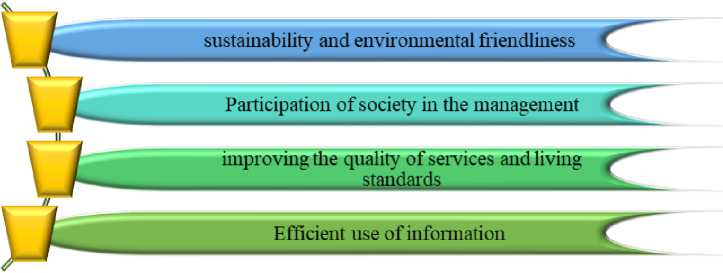
Fig.5. The Main Features of "Smart Cities"
The development of e-services significantly depends on the availability of information and communication technologies (ICT) in the country and their accessibility. The main goal is to expand the use of e-services and ensure sustainable development in the regions.
Smart urban solutions use a variety of platforms, automation of database processing centers, and sensor networks. In addition, the concept of a smart city highlights the development and distribution of smart cards, which are the individual keys to various facilities and points for each resident of the city [6].
Azerbaijan is also taking steps in this direction. Thus, the use of smart cards in the subway, buses, parking of private cars [6], shopping, salaries, water, electricity, and gas meters has been successfully implemented in our country for several years [7].
Let's look at the information on the current state of the application of ICT in public administration in Azerbaijan:
-
g, •Infannation resource in the register of state information resources
-
• Information system registered hi the State Register ofPersonal Data
178 InfbnnationSystems
-
• Number of information systems andresources of government agencies 75 connected to the e-govenunent portal
322 * Public services provided for use on the e-govenunent portal
-
• Government mfonuation published in 19 categories on the "Public Data" 650 portal
Fig.6. The Main Features of “Smart Cities”
The e-government portal in Azerbaijan 2012 provides a secure exchange of information between these information systems and facilitates the provision of centralized e-services. The e-government infrastructure provides access to information through the e-government gateway in accordance with the authority by establishing connections through secure telecommunications channels [8]. Currently, the education system is provided through a cloud platform. In addition, the pandemic period gave impetus to the development of e-commerce, e-business, e-signature, social services, in short, Internet shopping on cloud platforms [8].
It has been applied in the new generation of ID cards, which have been issued to citizens of the Republic of Azerbaijan since 2018 [6]. As a result of the development of ICT in the country, the volume of information included in state information systems and resources is increasing day by day. This growth requires government agencies to maintain these information resources, create new ones, exchange information, write new or additional services for e-services, and provide large amounts of funds and continuous technical support for the provision of additional equipment, and qualified human resources. The main goal here is to expand the use of e-services and ensure sustainable development in the regions [6].
One of the main technical parameters of the smart city is the combined use of the Internet of Things and ICT, which uses sensory networks and sensors that allow real-time monitoring [3].

Fig.7. Aspects that Define a Smart City

It has the potential to help develop Smart City operations. Focusing research and innovation processes on the integration of people into the daily, real-life context of then role as citizens and consumers
Ability to use the involvement of enterprises and SMEs in a way that creates new business models and value networks. r
Living Lab
-
Fig.8. Living Lab Research
As noted, the term “smart city” is quite broad and can cover a variety of services offered to citizens and visitors, as well as different concepts and goals that vary from city to city and even in the same country. Therefore, the main goal of the project is to create an empirically based methodology to help cities become smarter [3].
This methodology will be a key part of the solution and is based on lessons learned from three active cities:
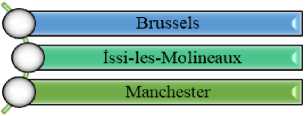
-
Fig.9. Operating Cities
In Brussels, project partners will help establish a new Resettlement Service for families relocating to Brussels. The new program will be designed to help the family find a new place to live according to their special needs [3].
The results of the survey will use augmented reality to visualize, and citizens will eventually be able to ask questions along the way when visiting their new neighborhoods [3].
The new Urban Planning Service at Issy-Les-Molineux will create a virtual space for consultations and dialogue on proposed urban development between government officials, citizens, and businesses [3].
The application will combine rich media, 3D modeling, and symbolic information to allow users to experience the planned developments for themselves. Thanks to the latest technology, users will be able to "get acquainted with new developments" through the digital 3D model of the city [3].
New Environmental Services in Manchester, new and existing RFID / IoT technologies help households track carbon consumption. IoT data collectors will measure environmental factors such as electricity, temperature, and gas consumption to provide households with an instant view of their energy use.
Cities, in turn, will be able to use the data collected to influence policy and achieve carbon reduction goals [3].
According to the research of leading research and consulting company Gartner Consulting, 2% of CO2 gas emissions to the air falls to information technologies share [9].
3. Analysis and Evaluation
In this article, our research on Azerbaijan is based on Living Lab. It is clear that the spread of digital technologies for the construction of a smart city in Azerbaijan is a prerequisite. In this regard, we have conducted a comprehensive analysis of 4 indices for 2019-2021.
The Network Readiness Index (NRI) for 2019 is one of the indicators holding back Azerbaijan, the accessibility sub-index [11].
Let's pay attention to the international ranking table on statistical analysis by country. According to the Network Readiness Index (NRI) in 2019, Azerbaijan ranked 85th out of 121 countries. According to the Network Readiness Index (NRI) for 2021, Azerbaijan ranks 76th out of 130 countries. Turkey ranks 45th, Russia 43th, Kazakhstan 61th, and Georgia 68th.
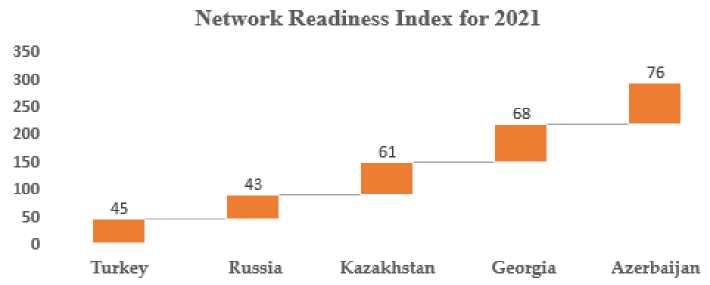
Fig.10. Network Readiness Index 2021
Recognizing the proliferation of digital technologies in the modern networking world, the Index is based on four key dimensions: technology, people, governance, and impact [11].
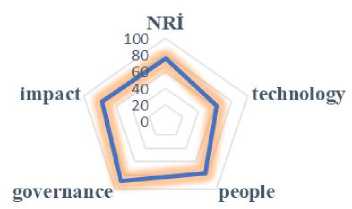
Fig.11. Measured Elements of Network Indices
Our research shows that one of the indicators that lags behind Azerbaijan in the Network Readiness Index (NRI) is the accessibility sub-index. Let's look at the table below:
Table 1. Accessibility Sub-index Indicators (Azerbaijan and Neighboring Countries, 2019)
|
Countries |
Sub-index of the price of a mobile phone that provides access to the Internet |
4G mobile network coverage sub-index |
Sub-index of availability of the latest technologies |
Sub-index of purchase of advanced technological products by the state |
|
Azerbaijan |
22,84 |
49 |
64,03 |
67,26 |
|
Georgia |
38,69 |
99,72 |
32,35 |
38,46 |
|
Kazakhstan |
55,88 |
75,3 |
36,37 |
40,08 |
|
Turkey |
35,86 |
93,17 |
56,45 |
42,19 |
|
Russia |
58,97 |
70 |
43,63 |
42,91 |
The sub-index of the price of a mobile phone with Internet access in Azerbaijan is low (22.84), ie mobile phones are expensive [11]. This means that the price of the cheapest mobile phone that supports 3G and 4G, which provides Internet access in our country, is more expensive than in Georgia (sub-index = 38.69), Kazakhstan (55.88), Russia (58.97), Turkey (35.86) [11].
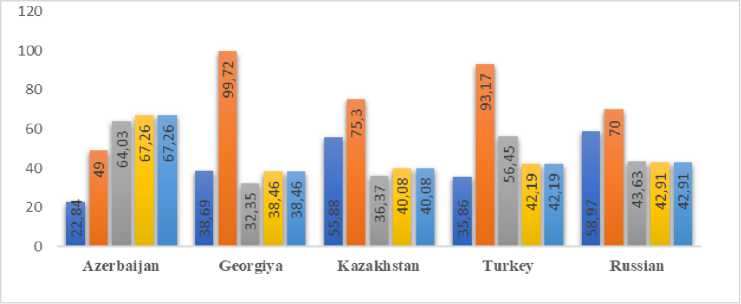
Fig.12. Accessibility Sub-index Indicators (Azerbaijan and Neighboring Countries)
The number of mobile broadband Internet subscriptions is also not high (59.6 per 100 people). This means that lowering the price of 3G and 4G-enabled mobile phones, which can be used to connect to the Internet, generally increases the number of people connecting to the Internet from mobile phones, but there are other factors as well [11].
Let's look at the share of technologies in Baghdad, Baku and Almaty in the digitalization ranking of cities in 2020:

Fig.13. The Share of Technologies in the City – 2020
The fact that the share of technology in the ranking of digitalization of cities in 2020 in Baku is low is also a factor that hinders the strengthening of smart city urban planning [11].
The availability of the latest technologies in the city depends significantly on the conditions created by the state for their import into the country. This is to increase the efficiency and competitiveness of the economy and ensure its innovation-based progress. Let's look at the growth rate of the ICT development index in Azerbaijan in 2020, calculated by the International Telecommunication Union [11].
In our study, based on the growth dynamics for 2017-2020 [11], the forecast was calculated by analyzing the trend in the ICT development index in Azerbaijan for 2022-2025:
Table 2. The Growth Rate of the ICT Development index in Azerbaijan (2017-2020) and (2022-2025)
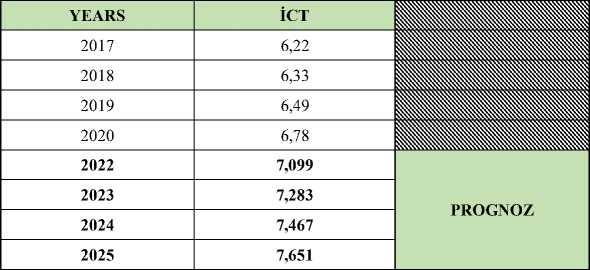
In the calculation, the "Tendency" function was used in the MS Excel program.
As can be seen from Table 2, given the development of smart cities, there is a need for expanded measures to increase the growth rate of the ICT development index [11].
Currently, the smart cities founded in Azerbaijan in 2021 are Shusha city, the cultural center of Karabakh, and the strategically important Zangilan city liberated from Armenian occupation [10].

Fig.14. Smart Cities founded in Azerbaijan (2021)
200 individual houses are already being built in the Zangilan region of Azerbaijan within the Smart Village project. Founded in April 2021 by President Ilham Aliyev, the area covers 110 hectares.
The first step in the return of Azerbaijan to the Karabakh region within the project began in Zangilan. In the first stage, the project will be implemented in Agali village on 5 components: [1].

■Smart village household”
Fig.15. Components of Agali Village Project
A school for 360 pupils and a kindergarten for 60 children are expected to operate in Zangilan. Roads have already been built. The "Smart School" to be established in the village will have all the opportunities for distance education [10].
Modern urban planning standards will be applied here. In one word, there will be all-around living conditions for residents. Modern irrigation systems will be used in "smart agriculture". A planting plan has been prepared for the Smart Village project. The "smart governance system" will be implemented from the data and analysis center [12].
A 110 kV power transmission line has been laid in the Zangilan district. Two 25-megawatt transformers have been installed at the Zangilan substation. At present, non-residential subscribers are envisaged in the area [12].
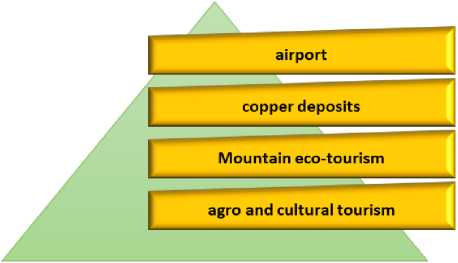
Fig.16. Smart Governance System in Zangilan
Zangilan, which is projected to house more than 50,000 people, is expected to have more than 40 megawatts of electricity by 2040 [12].
The geographical position of the region and the opportunities available here create favorable conditions for turning Zangilan into an international transport and logistics center. The International Airport will play a major role in the future successful socio-economic development of Zangilan [13].
It is planned that waste will be managed in Shusha, Azerbaijan on the basis of smart technologies. The construction of a new sanitary landfill in the liberated city of Shusha, Azerbaijan, which meets international environmental standards and technical norms, is carried out by "Tamis Shahar" company for the collection, transportation, disposal, and disposal of all solid waste. Thus, work has already begun to create a modern environmental and technological management system for solid waste. 200 special containers were brought for waste disposal and installed at the identified waste sites. This makes it necessary to build the city's environmental situation and waste management system by applying the latest technological innovations in accordance with modern standards.
4. Result and Discussion
Our article emphasizes that the spread of digital technologies is a prerequisite for the construction of a smart city in Azerbaijan. In our study, based on the growth dynamics for 2017-2020, the forecast was calculated by analyzing the trend in the ICT development index in Azerbaijan for 2022-2025.
NRI identifies the indicators that lag behind Azerbaijan in the ranking for 2021. In our study, proposals were made to eliminate the indicators that hold Azerbaijan back on NRI. We think this is not enough. A "smart villa" is being built in the Azerbaijani city of Shusha and Zangilan. However, as there are no statistical indicators in the article, we have only analyzed the theory.
During this study, we got acquainted with the experience of Azerbaijan's neighboring countries.
Smart city solutions use various platforms, automated sensor networks and data processing centers. Also, the concept of a smart city often implies the presence of smart cards issued to each resident. Such smart cards are a personal key to all objects in the city: metro, parking, cinemas, etc [2].
Smart technology — refers to a set of advanced technologies used in cities, such as wireless sensor networks, IOT, big data, cloud computing, artificial intelligence, applications, systems, mobile devices, mobile applications, wireless smartphones. The smart technology refers to each of the smart city elements [14].
In the next study, we plan to analyze the development of Big Data through digital intelligence and the indicators that are holding back Azerbaijan in digital technologies. We will compare Azerbaijan with neighboring countries in the development of digital technologies. We plan to prepare proposals in this direction. Thus, we are helping to make contributions to the development of a smart city in Azerbaijan.
Based on studies, we can say that smart urban planning is impossible without smart technologies.
There is a need for expanded measures to increase the growth rate of the digital technology development index in Azerbaijan. It is expedient to determine the indicators of smart technologies, and digital indices of the urban economy, including the latest technologies.
We offer a reduction in the price of mobile phones that provide access to the Internet and support 3G and 4G in our country.
Along with the cloud platform, we suggest exploring integrated management services in mobile technologies.
5. Conclusions
According to the results of our research on the development of smart cities, we can say that there is a great need for the development of new inflator systems for measuring digital technologies in our country.
The study estimated that one of the indicators holding back Azerbaijan in the Network Readiness Index (NRI) was the accessibility sub-index and forecasted for the coming years. 3G and 4G, which play a role in smart city development, were analyzed as a result of the analysis of four indicators, including the price sub-index of mobile phone access to the Internet, the sub-index of 4G mobile network coverage, the sub-index of availability of the latest technologies and the sub-index of government procurement of advanced technology products. Reducing the price of mobile phones that support the Internet can play an important role in increasing the number of people connected to the Internet from mobile phones.
As a result of the high development of science and technology with the application of the concept of a smart city, the lifestyles of the urban and rural populations will be different.
As a result of the study, an analysis of trends in the ICT development index in Azerbaijan for 2022-2025, according to the forecast, there is an increase in the dynamics of the development of digital technologies, which will accelerate smart urban development.
In our opinion, it is important and effective to conduct regular training at different levels (for example, according to the age and potential of the learner) on the formation and improvement of ICT skills in the "smart city".
Proposals on the application of the "smart city" concept are being prepared in our country. The project provides employment for qualified personnel and creates more jobs for them. This is a system of providing qualified personnel with jobs in a shorter time. The main advantage is that the "smart city" itself provides employment and employment opportunities [14].
Our country's strategic geographical position close to the European Union, Russia, and the Middle East markets, agricultural products, crafts, and cultural heritage, which can create a basis for the development of tourism, will accelerate this process. Expected results The expected results of the implementation of the concept of "Government cloud" (G-cloud) as a result of the implementation of the construction of a smart city are as follows:
-
• Operation of electronic and mobile services of government agencies in the “Government Cloud” and accessibility of public services to citizens from anywhere.
-
• Organization of services in the "Government cloud" for the analysis of large amounts of government data on the basis of "cloud computing"
The "smart village" system will allow for overcoming the spatial barriers created by long distances and population density in rural areas. The implementation of the Smart Village project will increase investment in rural areas, increase productivity and the range of social services provided through technological innovations, and expand the coverage of high-speed fiber-optic internet and advanced communication services. The use of renewable energy sources will also increase, and there will be a significant increase in the production of environmentally friendly products [15].
Список литературы The Leading Role of Digital Technologies in the Development of the Smart City Concept in Azerbaijan
- https://creative.az/az/post/483
- Zamshin P.A., Faleev S.A., Bobrysheva O.V., (2020). Smart City on The Example of Moscow.
- Pieter Balloon, Julia Glidden, Pavlos Kranas, Andreas Menychtas, Susie Ruston, Shenja Van Der Graaf. (2011). Is there a Need for a Cloud Platform for European Smart Cities? e- Challenges e-2011 Conference Proceedings Paul Cunningham and Miriam Cunningham (Eds).
- Justyna Winkowska, Danuta Szpilko, Sonja Pejić (2019). Smart city concept in the light of the literature review/ Engineering Management in Production and Services.
- https://safecities.economist.com/safe-cities-2021-whitepaper/#
- https://www.bna.az/az/faq
- https://azeriqaz.az/az/content/3/6
- https://www.e-gov.az/az/content/read/2
- A. Mehdialiyev, O. Mazanova. (2013) "On some problems of the creation and development of green technologies in Azer-baijan," 2013 7th International Conference on Application of Information and Communication Technologies, DOI: 10.1109/ICAICT.2013.6722804.
- https://president.az/az/articles/view/51179
- https://networkreadinessindex.org/wp-content/uploads/reports/nri_2021.pdf
- https://azertag.az/xeber/Azerenerji_ASC_nin_110_35_10_kV_luq_Zengilan_yarimstansiyasi_istifadeye_verilib_VIDEO-1904844
- https://ikisahil.az/post/309174-zengilan-beynelxalq-neqliyyat-logistika-merkezine-chevrilecek-2
- Arzu Huseynova, Ophelya Mazanova, Pikakhanum Khudiyeva, Hicran Muradova, Haciyeva Leyla, Najafova Kamala. (2022). Innovative way of solution of “Smart city” in Azerbaijan –city problems, WSEAS Transactions on Business and Economics 19:1394-1402, DOI: 10.37394/23207.2022.19.125
- Binti Adnan, S. N. N., Awang, J., Rahman, Z. A., Ibrahim, M., Long, A. S., Kamarzaman, H., & Mohamed, S. B. (2018). The ‘Imran al ‘Alam theory’s approach to the social smart city is ethical. International Journal of Civil Engineering and Technology, 9(7), 269-277.

